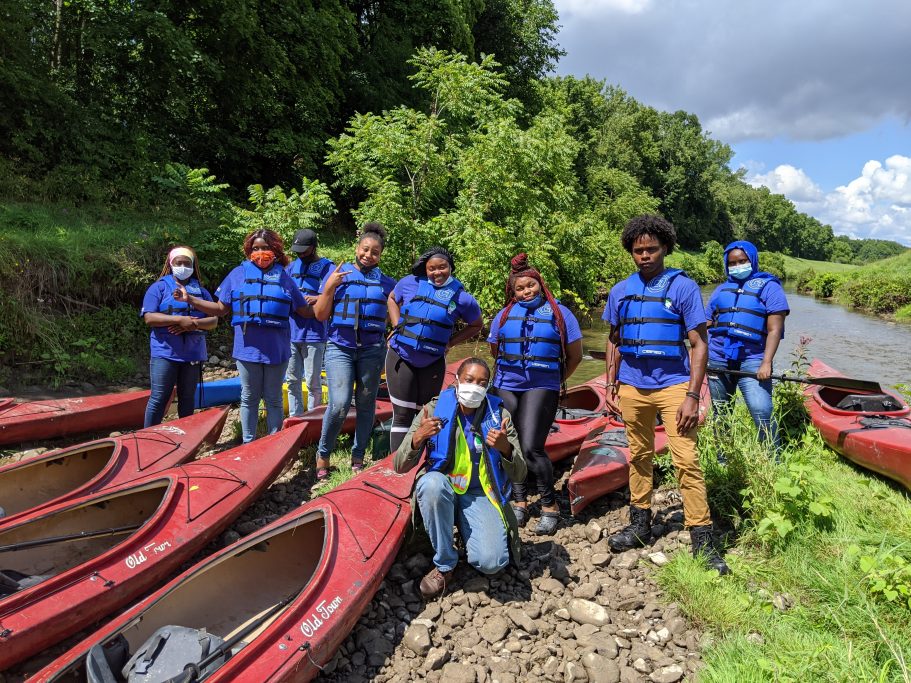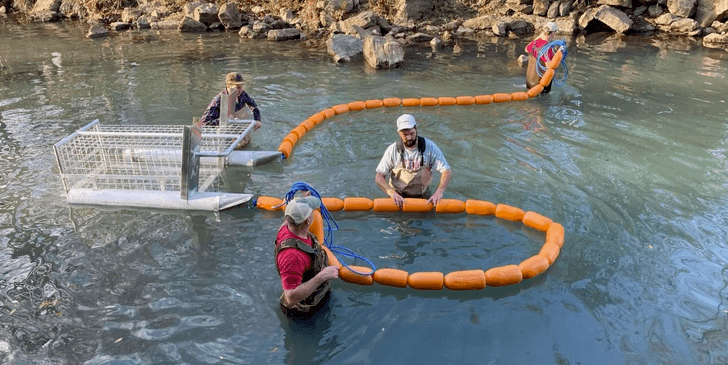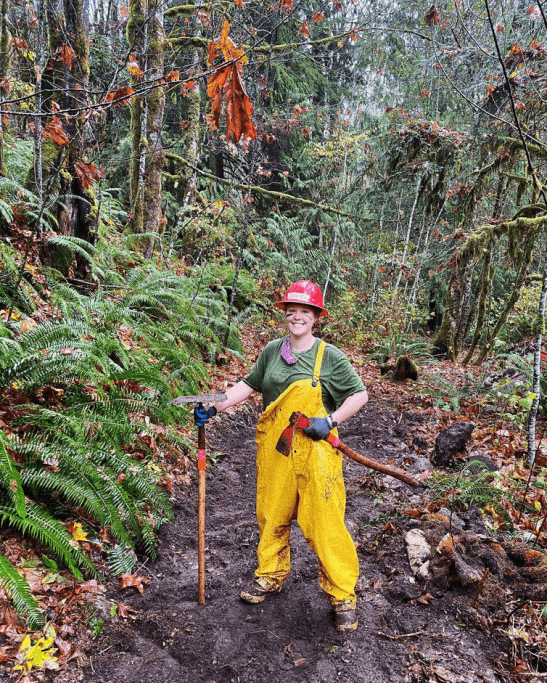Engaging Youth and Communities for Impact in 2020
Impact in 2020 looked very different for River Network and the groups we serve. How did we help get groups, and especially youth, on the water and cleaning up the water, despite it all? Cultivating community and youth stewardship of our waters was no less important this year – in fact, it was more important than ever. Here are highlights from our staff about a few of the many programs supporting these types of activities, both in and on the water, with community in mind.
Cultural Preservation in the Community
This summer, in partnership with the National Park Service, we awarded approximately $150,000 to 11 organizations to support their on-water education, recreation, and cultural preservation efforts. Despite COVID-19 closures, physical distancing requirements, and other obstacles –not to mention the historic wildfire seasons in the Pacific and Rocky Mountain regions – these groups persevered in new, creative ways. Their projects, many of which are still unfolding, not only improved local waters, but centered tribal communities, promoted youth mental health, and expanded access to outdoor education in communities that have historically lacked such access.
Cahaba River Society and San Diego River Park Foundation transitioned their in-person programming into virtual river field trips and other online learning resources for students and teachers. Corazón Latino utilized National Latino Conservation Week and National Public Lands Day to host a series of online concerts. Flint River Watershed Coalition encouraged youth to use their waterways as opportunities to address stress and anxiety through their Mindful Paddling program. Puget Soundkeeper Alliance, Four Mile Run Conservatory Foundation, and Sandy River Watershed Council used funding to engage volunteers in outdoor, physically distanced activities such as biomonitoring, tree plantings, and flatwater safety/rescue trainings.

Courtesy Onondaga Environmental Institute.
Other grantees such as Kenai Mountains-Turnagain Arm National Heritage Corridor Communities and Onondaga Environmental Institute are using their funding to update equipment, create new programming, and develop new curriculum for when youth can be together again. Glen Canyon Conservancy and West Atlanta Watershed Alliance have worked tirelessly to find safe, creative ways to engage traditionally under–resourced communities in Atlanta and with the tribal communities of Kaibab Paiute, Ute Mountain Ute (White Mesa Band), Hopi, Navajo, San Juan Southern Paiute, and Pueblo of Zuni.
-Brenna Goggin
Birmingham Community Collaborates for Trash Free Waters
In Birmingham, Alabama, the Village Creek Society has been partnering with Freshwater Land Trust and Osprey Initiative in an effort to eliminate waste in our waters. On October 1, Osprey Initiative installed a Litter Gitter device at East Lake Park. A Litter Gitter functions as a type of funnel device in a waterway that traps litter as it flows downstream. In its first month on the water, the Village Creek Litter Gitter has already collected 120 pounds of litter, and the community removed an additional 82 pounds of litter during a physically distant park clean-up on the day the device was installed. The Village Creek Litter Gitter is only one of eight devices in Jefferson County!

Courtesy Freshwater Land Trust.
This program is only possible with the support of the Coca Cola Foundation, and with the dedication and work of local leaders like Sally Larue from Freshwater Land Trust who help bring their communities together. “Working partnerships are vital when it comes to addressing litter issues. Throughout Central Alabama, local governments, nonprofits, schools and universities, and businesses have joined forces to fight against litter and to promote clean water and healthy communities. Working together means we can make a large-scale impact, greater than what any of us could do alone.”
Thanks to community involvement and investment in litter capture devices, various partners have been able to collaborate to remove litter from Birmingham. As the Litter Gitter remains in Village Creek, Freshwater Land Trust and the Village Creek Society will begin educating the public on the benefits of the device, and further engaging the community in learning about litter removal and prevention.
-Karla Noboa
Youth Stewardship and Community Science on Wild & Scenic Rivers
Local groups are also working creatively to protect and expand access to the Wild and Scenic Rivers (WSR) that flow through their communities nationwide, providing opportunities for recreation, protecting drinking water, and helping fuel local economies. Over the last two years, we’ve partnered with the US Forest Service (USFS) and the National Park Service (NPS) to award funding to a total of 19 local organizations who are stewarding their USFS–administered WSRs and to groups improving management through community watershed science on NPS–administered WSRs, including efforts to center youth engagement, building their skills and connection to local waters.

Courtesy Glacier Peak Institute.
For instance, Oak Rankin, Executive Director of the Glacier Peak Institute (GPI) in Darrington, Washington, reports that their outdoor and environmental education programming for underserved youth on the Sauk and Skagit Rivers is “building resilience and critical thinking skills and confidence for kids in the community.” GPI organizes raft trips and STEM-based education for local, rural students, none of whom have ever before been out on the river. This year, in response to COVID, GPI has adjusted their safety protocols and programming and has been reaching out directly to families in some cases.
Other groups implementing projects under these programs include Flathead Rivers Alliance, Friends of the Inyo, Idaho Rivers United, Kentucky Waterways Alliance, Wild South, Delaware Riverkeeper Network, Friends of the Wekiva River, Lyme Land Conservation Trust, Missiquoi River Basin Association, Musconetcong Watershed Association, OARS, and Winyah Rivers Alliance.
-Katherine Baer
All told, in 2020 River Network was able to provide over $600,000 to local community groups and worked with them to ensure their programs were able to adapt in the face of so much change. We’re honored to play a small role in so many unique and impactful projects across the country and look forward to building on this progress in 2021!





[…] Read more. […]
[…] supports community engagement through litter collection, trash clean ups and installation of in-stream litter collection devices, we wanted to know how this information can be used to inform change. As part of my summer […]